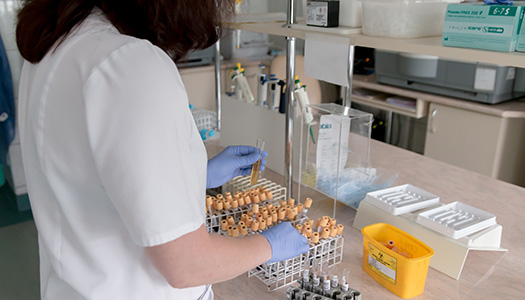Endometriosis
Endometriosis is a disease affecting many millions of women and teen s worldwide and a leading cause of female health problems. It is a women’s medical condition that occurs when the lining of the uterus, called the endometrium, grows in other places, such as the fallopian tubes, ovaries or along the pelvis. When that lining breaks down, like the regular lining in the uterus that produces the menstruation, it has nowhere to go. This causes cysts, heavy periods, severe cramps and even infertility.
Symptoms of endometriosis include:
- Pelvic pain, especially around the time of menstruation
- Pain during sexual intercourse
- Heavy menstrual bleeding
- Pains and cramps during menstruation
- Sleep problems
- Cyclical abdominal pain
- Intermittent diarrhea and constipation
- Painful or difficult urination
- Blood in the urine
- Infertility
Causes:
Doctors don’t know the exact cause of endometriosis. A combination of genetic, biologic, and environmental factors may work together to trigger the initial process, produce implantation, and cause subsequent reseeding and spreading of the implants.
Theories of the cause of endometriosis include:
- Retrograde Menstruation. Retrograde menstruation occurs during a woman’s period, when menstrual tissue flows backward through the fallopian tubes rather than out through the vagina. In some cases, the redistributed endometrial tissue may attach and grow in areas outside the uterus, forming endometriosis implants. Many women have some retrograde menstruation, but not all of them develop endometrial cysts .
- Exposure to Estrogen. Prolonged exposure to estrogen may play a role in the development of endometriosis. Causes of prolonged exposure to the body’s own estrogen include early-age menstruation, short menstrual cycles, and obesity. Sources of external estrogen exposure include endocrine-disrupting chemicals.
- Impaired Immune System. Another theory is that women who develop endometriosis have an impaired immune system that fails to identify and destroy endometrial tissue that grows outside of the uterus
Risk Factors for developing Endometriosis:
- Mother or sister with endometriosis
- Early onset of menstrual periods
- Periods lasting 7 or more days
Homoeopathic Treatment:
For endometriosis treatment, a homoeopath has to take into consideration individualistic physical and mental complaints of every patient and accordingly medicines are prescribed.







